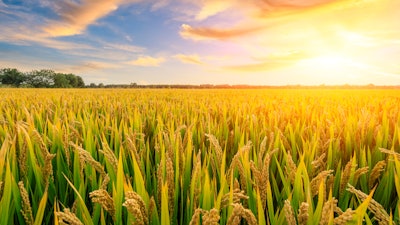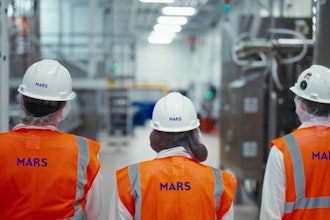
FAYETTEVILLE, AR — A new $1 million grant from NASA’s Carbon Monitoring Program will go towards a study headed up by associate professor of biological engineering at the University of Arkansas, Benjamin Runkle, on greenhouse gases and its implications of rice cultivation.
The grant, titled “A national quantification of methane emissions from rice cultivation in the U.S.: integrating multi-source satellite data and process-based modeling,” will support the hiring of a postdoctoral scientist, graduate students and undergraduates to work on the project from 2021 to 2024.
The team project includes colleagues at the University of Illinois, Urbana-Champaign, where professor Kaiyu Guan will lead the detection of field inundation dynamics and advanced application of satellite imagery to help understand agricultural carbon and water dynamics.
“My research group and I have been working on rice farms in Arkansas since 2015, taking careful measurements of the methane emissions from rice fields and how to reduce them safely — so that the farmer’s harvest is not hurt,” Runkle said. “What’s especially exciting about this project is that by working with colleagues at the University of Illinois, we can now understand these methane emissions across the rice production regions of the United States. We hope to eventually create a system of climate-smart rice production that should help all the rice farmers of Arkansas’s Delta region be more sustainable.”
Half of U.S. production of rice occurs in Arkansas; unfortunately, rice production globally is also responsible for 8 percent of human-driven methane emissions, due to its cultivation in anaerobic (swampy) soil environments. Methane is a greenhouse gas 30 times more potent than carbon dioxide in terms of how it warms the earth’s atmosphere.
There is still considerable uncertainty to the methane emissions associated with rice cultivation in the U.S., and a more consistent estimate is necessary to observe, plan and reduce this greenhouse gas source.
This project takes on the challenge of monitoring methane production in the U.S.'s rice producing regions by integrating satellite data with a process-based model to produce a consistent national estimate of methane emissions associated with rice cultivation. The product will be validated against Runkle’s field methane emissions observations at several rice farms in Arkansas, as well as similar research by others at sites in California. Runkle has taken these measurements since 2015 in Arkansas alongside colleagues from the USDA’s Agricultural Research Service.
The team aims to overcome existing challenges in understanding rice’s climate impact. They will work with both field-based datasets and new models that incorporates satellite imagery across all the rice growing regions of the U.S.
Their final estimates will be driven by a new daily, satellite-based map of both inundation and plant growth. This product could have spin-off benefits in terms of understanding rice’s irrigation water use and could help farmers increase their harvest yields.
The results of the project should support stakeholder groups' interests — including those in non-profit, business and government — for methane emissions reduction, soil carbon storage and sustainability for the agricultural landscape. It should be especially relevant for the rice farmers of the eastern part of Arkansas, who can modify their production practices based on project findings. The project products will be accessible to both researchers and land managers and will be published in scientific journals.
About the University of Arkansas: As Arkansas' flagship institution, the U of A provides an internationally competitive education in more than 200 academic programs. Founded in 1871, the U of A contributes more than $2.2 billion to Arkansas’ economy through the teaching of new knowledge and skills, entrepreneurship and job development, discovery through research and creative activity while also providing training for professional disciplines. The Carnegie Foundation classifies the U of A among the top 3% of U.S. colleges and universities with the highest level of research activity. U.S. News & World Report ranks the U of A among the top public universities in the nation. See how the U of A works to build a better world at Arkansas Research News.






















